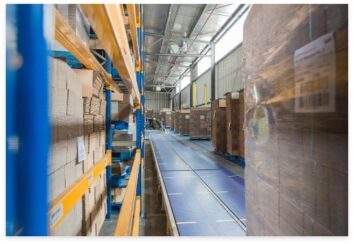“One of the big advantages of OrderFlow is how it connects with different third party systems like e-commerce platforms such as Magento, ERP systems and couriers. This is something other WMS’ don’t support very well,” says Peter. “OrderFlow is an expert in B2C warehouse management and we’re now one of the first to rollout its new B2B WMS functionality.
We want to use OrderFlow to distinguish between small B2C orders and large trade orders, so that we can optimise our processes for each. If we get a problem with a small order we take it out of the workflow, address the issue and then start the pick and pack process again from the beginning. For big trade orders it’s different – if we’ve already picked 50 or 60 SKUs we don’t want to undo all that work because of a problem with one SKU, instead we want the picker to skip ahead to the next item to be picked
We work in case or carton quantities for our B2B orders and in individual item quantities for B2C orders – OrderFlow supports both approaches. We’ve been working with the OrderFlow team to refine this approach further. The latest OrderFlow release allows us to pick B2B and B2C orders from the same pick location and will keep track of the quantities in individual cases once they’ve been opened.
OrderFlow has a great way of keeping track of what is really happening in the picking face. In most WMS’ the outer carton is just a theoretical stock keeping unit; you have, for example, five pieces of stock, which are five boxes of ten, but the system doesn’t really know if there are five complete boxes of ten or lots of open boxes with a couple of items removed. In OrderFlow it is known, and that information can be used as an input to optimise our picking. That’s something I haven’t seen in a WMS before and works very well – it really reflects the truth in the warehouse and that’s essential I think.”

